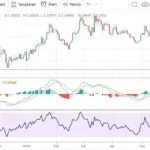Decentralized Finance (DeFi) has revolutionized the financial landscape by offering open, permissionless access to lending, trading, and investment opportunities. Yet, with innovation comes risk. Over the past few years, DeFi has become a prime target for cybercriminals — resulting in billions of dollars in losses. These attacks highlight a critical truth: while DeFi’s potential is vast, its security foundation remains fragile.
The Scale of the Problem
According to Chainalysis, over $1.7 billion was stolen from DeFi protocols in 2023 alone, making it one of the most vulnerable sectors in the blockchain ecosystem. Unlike traditional finance, DeFi operates without centralized intermediaries, meaning that when funds are stolen, recovery is often impossible.
These breaches not only erode investor confidence but also draw increased attention from regulators who are concerned about consumer protection and systemic risks in decentralized ecosystems.
Common Security Vulnerabilities in DeFi
- Smart Contract Exploits
At the heart of every DeFi platform lies a smart contract — a self-executing code that governs how funds are managed. Unfortunately, coding errors or unverified logic can create loopholes that hackers exploit.
- Example: The Poly Network hack (2021) saw $600 million stolen due to flaws in smart contract permissions.
- Lesson: Comprehensive audits and formal verification of smart contracts are essential before deployment.
- Oracle Manipulation
Many DeFi platforms rely on price oracles — services that provide real-world data such as token prices. When oracles are poorly designed or insufficiently decentralized, attackers can manipulate prices to their advantage.
- Example: In the Mango Markets exploit (2022), attackers inflated the price of a token to borrow against it, draining over $100 million.
- Lesson: Use decentralized oracles like Chainlink and implement safeguards against price manipulation.
- Flash Loan Attacks
Flash loans, which allow users to borrow large sums instantly without collateral (as long as they repay within the same transaction), have become powerful tools — both for traders and attackers. Hackers use these to manipulate liquidity pools or exploit vulnerabilities within seconds.
- Example: The bZx protocol was repeatedly targeted by flash loan attacks, resulting in multi-million-dollar losses.
- Lesson: Implement transaction-level checks and restrict sensitive functions that can be manipulated in a single block.
- Cross-Chain Bridge Vulnerabilities
Cross-chain bridges, which enable token transfers between different blockchains, have become a major attack vector.
- Example: The Ronin Bridge hack (2022) linked to Axie Infinity resulted in a $600 million loss, one of the largest in DeFi history.
- Lesson: Bridges should use multi-signature authentication and continuous monitoring to prevent single points of failure.
Why DeFi Is So Difficult to Secure
DeFi’s open-source nature, while promoting transparency, also makes it easier for attackers to study and exploit code. Moreover, the fast-paced innovation in the space often prioritizes speed and growth over robust testing and security audits.
Another challenge is decentralized governance. With DAOs (Decentralized Autonomous Organizations) controlling protocol decisions, response times to vulnerabilities can be slower compared to centralized teams.
Mitigation Strategies for a Safer DeFi Future
To build trust and resilience in the DeFi ecosystem, several measures must become standard practice:
- Regular smart contract audits by reputable cybersecurity firms.
- Bug bounty programs to reward ethical hackers who identify vulnerabilities.
- Insurance protocols to protect investors from losses due to hacks.
- Education and transparency for users about risks and security practices.
- Multi-layer security models, combining code audits, monitoring systems, and governance checks.
The Road Ahead
Despite the risks, DeFi continues to expand — with growing institutional interest and technological progress. Each hack, though costly, provides valuable lessons that strengthen the ecosystem. The industry is learning to balance innovation with security, moving toward more resilient protocols and standardized best practices.
In the long run, the success of DeFi will depend not only on its ability to innovate but also on its capacity to protect user assets and maintain trust. As the saying goes in crypto circles: “Code is law — but security is survival.”














